Furuno NXT & Garmin Fantom, Doppler marine radar is here!
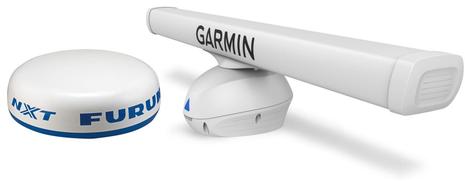 Exclamation marks, curse words…honestly I’m trying to hold myself back. Furuno and Garmin are both announcing new solid state radars here at the Miami Boat Show. So after many years of Navico trailblazing what is arguably a better way of doing radar, and with Raymarine Quantum just recently announced, suddenly all four major brands offer some form of solid state. That would be big news by itself, but the Furuno NXT radome and the Garmin Fantom open array also both justifiably proclaim a first in bringing valuable Doppler radar enhancement to our boating world because neither apparently knew what the other was about to do. Can I get a HOLY MACKEREL!?!…
Exclamation marks, curse words…honestly I’m trying to hold myself back. Furuno and Garmin are both announcing new solid state radars here at the Miami Boat Show. So after many years of Navico trailblazing what is arguably a better way of doing radar, and with Raymarine Quantum just recently announced, suddenly all four major brands offer some form of solid state. That would be big news by itself, but the Furuno NXT radome and the Garmin Fantom open array also both justifiably proclaim a first in bringing valuable Doppler radar enhancement to our boating world because neither apparently knew what the other was about to do. Can I get a HOLY MACKEREL!?!…
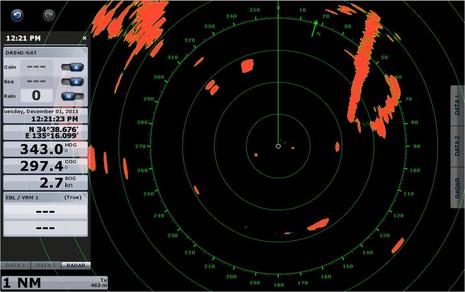 So here’s the new Furuno DRS4D-NXT UHD in action on a TZT or TZT2 multifunction display. It’s a 24-inch radome with ranges from 1/16th to 36 miles driven by 25 watts of pulse compression power said to be equivalent to a 4kW traditional magnetron radar. I presume that it has all the “normal” pluses of solid state radar like low power consumption, fast start up, long component life, and super safe emission levels, though I haven’t actually seen the specifications sheet yet. But I do know that what’s most significant about the screen above is what you still haven’t seen.
So here’s the new Furuno DRS4D-NXT UHD in action on a TZT or TZT2 multifunction display. It’s a 24-inch radome with ranges from 1/16th to 36 miles driven by 25 watts of pulse compression power said to be equivalent to a 4kW traditional magnetron radar. I presume that it has all the “normal” pluses of solid state radar like low power consumption, fast start up, long component life, and super safe emission levels, though I haven’t actually seen the specifications sheet yet. But I do know that what’s most significant about the screen above is what you still haven’t seen.
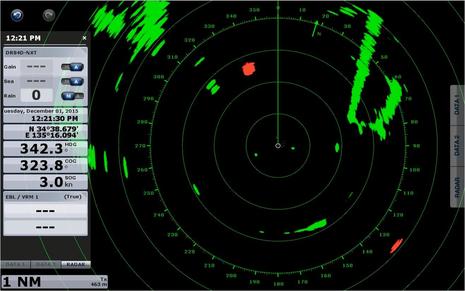 Boom, here’s the same radar scene with Furuno’s Doppler-based “Target Analyzer Function” in action. All targets in green are nearly stationary or moving away from your boat while the two targets in red are moving toward you at more than 3 knots. And purportedly this analysis happens very quickly and changes dynamically because Doppler means that target motion can be detected with every radar sweep. Plus, while this advancement by itself is major radar news, Doppler effect technology as I understand it should also help the NXT with automated sea clutter filtering, tuning, and more.
Boom, here’s the same radar scene with Furuno’s Doppler-based “Target Analyzer Function” in action. All targets in green are nearly stationary or moving away from your boat while the two targets in red are moving toward you at more than 3 knots. And purportedly this analysis happens very quickly and changes dynamically because Doppler means that target motion can be detected with every radar sweep. Plus, while this advancement by itself is major radar news, Doppler effect technology as I understand it should also help the NXT with automated sea clutter filtering, tuning, and more.
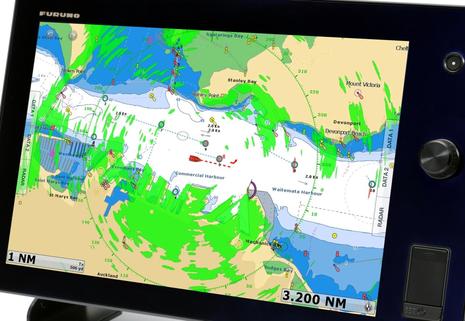 In fact, NXT radar also uses Doppler for a “Fast Target Tracking Function” which can supposedly display the speed and course vectors of any approaching vessel automatically and quickly. Moreover the DRS4D-NXT can have as many as 100 ARPA targets manually or automatically acquired — while none of the recreational marine competition has fully automatic ARPA at all — and it also boasts “RezBoost Beam Sharpening” (see Navico 4G and Halo radar features) and a new Bird Mode. Excited yet? The DRS4D-NXT UHD will retail for $2,600 and does not need a separate power supply with TZT MFDs as many other UHD radars do. More detail should be up now or very soon at NavNet.com
In fact, NXT radar also uses Doppler for a “Fast Target Tracking Function” which can supposedly display the speed and course vectors of any approaching vessel automatically and quickly. Moreover the DRS4D-NXT can have as many as 100 ARPA targets manually or automatically acquired — while none of the recreational marine competition has fully automatic ARPA at all — and it also boasts “RezBoost Beam Sharpening” (see Navico 4G and Halo radar features) and a new Bird Mode. Excited yet? The DRS4D-NXT UHD will retail for $2,600 and does not need a separate power supply with TZT MFDs as many other UHD radars do. More detail should be up now or very soon at NavNet.com
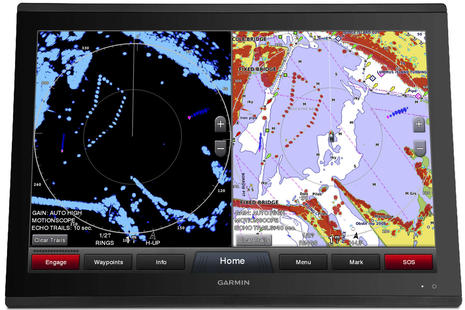 Meanwhile, Garmin coined “MotionScope” for its Doppler-based target speed discrimination feature on the new GMR Fantom 4- and 6-foot radars, and you can see it nicely marking moving targets in red with dark blue 10 second echo trails on the radar window above, with the useful trails carried over to the chart overlay. Fantom claims “highest in the industry” 40W of pulse compression power and also good wet weather (and bird) detection, as suggested on the screen below (which also shows the great Virb XE integration that I hope other brands will compete against). Fantom also claims target detection from 20 feet to 72 miles and has two rotation speeds with dual ranges and also support for dual radar units.
Meanwhile, Garmin coined “MotionScope” for its Doppler-based target speed discrimination feature on the new GMR Fantom 4- and 6-foot radars, and you can see it nicely marking moving targets in red with dark blue 10 second echo trails on the radar window above, with the useful trails carried over to the chart overlay. Fantom claims “highest in the industry” 40W of pulse compression power and also good wet weather (and bird) detection, as suggested on the screen below (which also shows the great Virb XE integration that I hope other brands will compete against). Fantom also claims target detection from 20 feet to 72 miles and has two rotation speeds with dual ranges and also support for dual radar units.
Note that the Fantom is a premium radar with the 4-foot model priced at $7,000 retail, and so probably are the new GPSMAP 84/8600 17-, 22-, 24-inch super-high-res MFDs we’re also seeing in these product photos. (Garmin is announcing lots of new products in Miami, and another I’m particularly keen to know more about is the PS21-TM Panoptix Forward transducer that “adds FrontVu for collision avoidance with a 300-foot forward range.”) More detail on Fantom and the other new products is online now.
Though it means getting out the door before this entry even posts, I’m super excited about seeing Furuno NXT, Garmin Fantom, Raymarine Quantum, and Simrad Halo all on the water over the next two days. I also think it’s time to declare the solid state radar war underway. I hope it rages like the sonar wars with wave after wave of more effective, easier to use and less expensive devices…except with less litigation. In the solid state radar battle everyone — boaters and manufacturers alike — could be a winner.


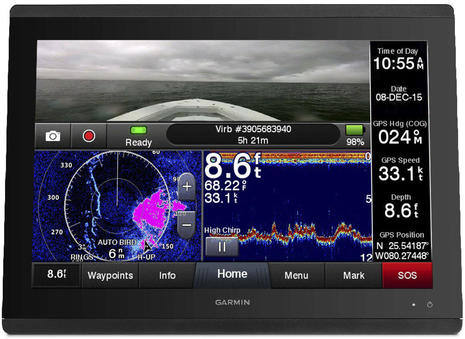
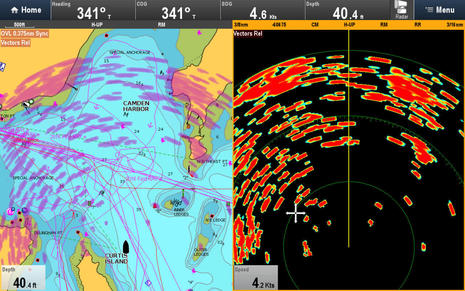
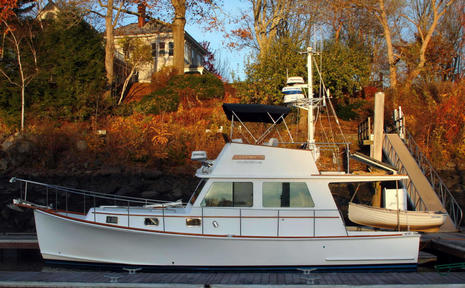
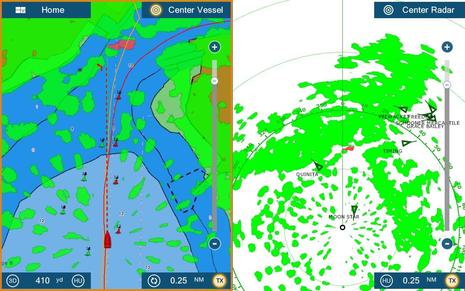
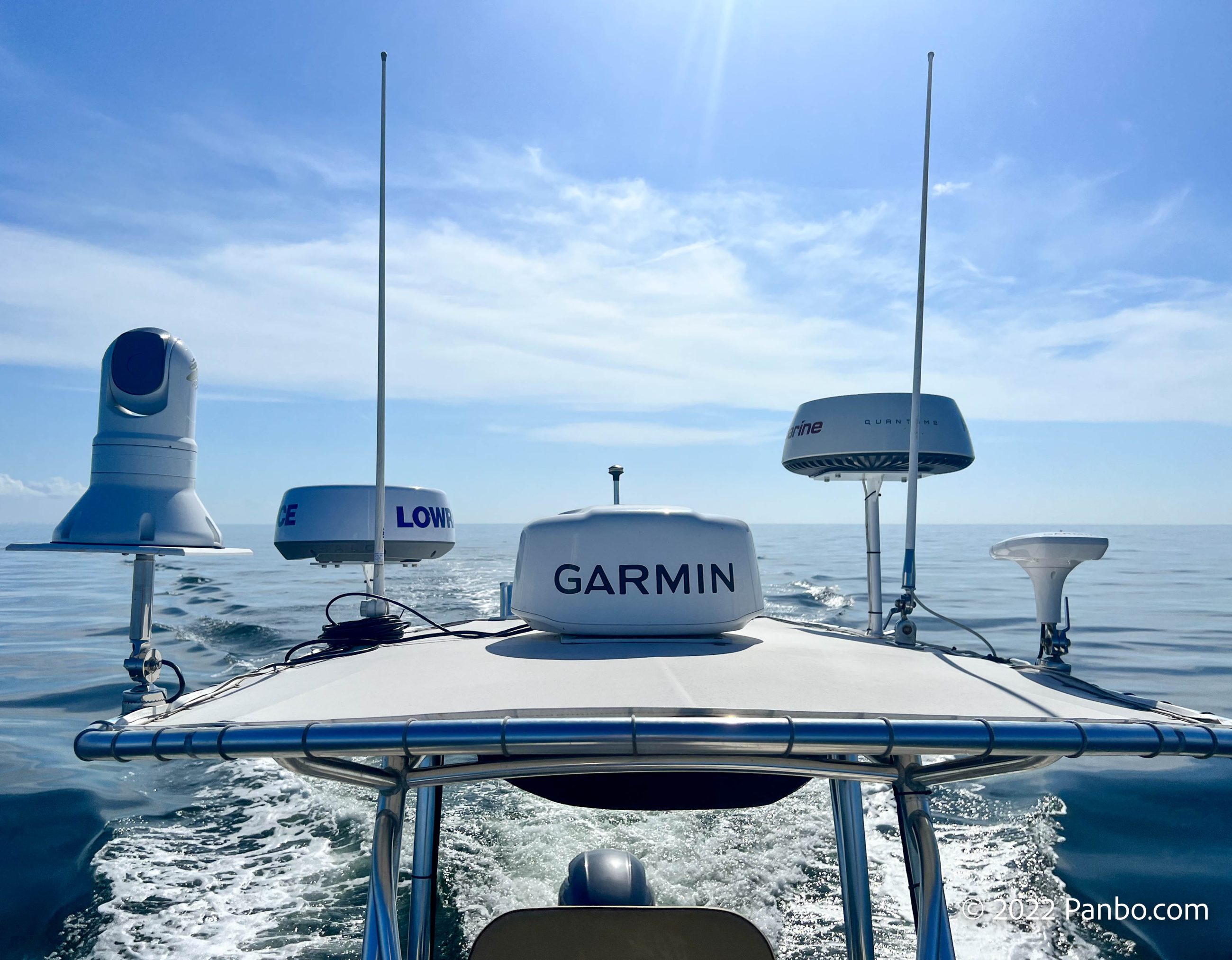







Dobbler?
NXT is truly impressive on Biscayne Bay
http://www.furuno.com/special/en/radar/drs4d-nxt/
I don’t mean to sound ungrateful, but I can’t wait for Garmin to bring the Solid State Doppler radar to the radome market for smaller vessels. The Navico 4G products have dominated this size radar for a long time while Garmin seemed to be asleep with only traditional magnetron technology. I think maybe they have awakened. Garmin, I’m ready to trade up.
OK, having recently bought a Simrad 4G I can now sit and watch their retail price go down. That’s the price of progress for you. But reading the article above felt like beeing a kid in a candy store 😉
Outstanding. Doppler and coloring of targets 3 knots and more approaching will make it much easier for the crew we need to put behind the helm of our sailboats, to use radar at night and in bad weather while we attend to other sailing tasks. ARPA too, that’s mind blowing!
Any word on any new open arrays from Furuno?
One can hope that the Doppler features are readily added to the Navico 4G, perhaps with a new interface module?
Looks like good competitive progress.
Furuno definitely planning bigger solid state Doppler radars.
Also Raymarine Quantum looking good at its 3G price point. Also its MARPA seemed very solid and they say it has the horsepower to do Doppler.
Game on!
My conversations with Furuno were the same- Open array solid state is in the near future. Might have to figure out a new mast arrangement
Garmin Fantom is also an excellent radar and Doppler target discrimination totally validated as a very valuable tool. Fantom was even marking moving cars on a big bridge. Unlike NXT, Fantom color codes targets moving away from you as well as incoming. It’s a new radar world.
Holy Mackerel! – for Ben, the biggest kid in the candy store 🙂 Gravitational waves? Yea, yea…big deal…new radars are more fun.
Ben — Did you get a chance to see the Garmin Fantom operated at longer ranges where the prior solid state radars have not been especially good?
If someone is mounting a Fantom 6 foot open array, it would typically be instead of a 12kW or 25kW magnetron open array. Those users will want to be seeing targets such as thunderstorms at very long ranges.
My 12kW Furuno open array will show storm cells and high shorelines more than 30-40 miles away very distinctly. It doesn’t matter so much for general navigation. However, given how fast a thunderstorm cell can be moving, the long range performance becomes quite important to getting out of the way sometimes for those of us who don’t like the thrill of riding out electrical storms with two 32′ aluminum outriggers on a tower guaranteeing you are the highest point for miles around.
I wonder how this will work out at sea (not, for example, in Biscayne Bay). The problem with the MARPA board in my Furuno 1932 is that as the boat slews around in a seaway, of course the targets’ relative bearings change, and the MARPA has a hard time keeping up with the changes.
Michael,
I had a similar experience until I installed a 10 Hz Furuno heading sensor for the Furuno 1835 radar we have. Everything is rock steady now. I previously thought the heading data from the N2K network via an Actisense converter would be fine, but it wasn’t.
Cheers
Don
Ben,
When should we expect a detailed shootout comparing the new solid state radars available for 2016. I saw the Quantum from Raymarine at the Seattle Boat Show but it was not operational. I used to think a 3G or 4G was in my future but all that has changed with the new alternatives from Raymarine and Furuno. Was here any indication of a new Garmin dome on the horizon? What’s Lowrance have up their sleeve?
Thanks,
Pete
It’s too bad the Furuno unit is not compatible with their NavNet 3D models. I am happy with my NN3D’s performance; I don’t like a touchscreen at the helm for variety of reasons, etc.
I’m not sure the compatibility issue is just processor speed of the NavNet 3D CPU’s?
Mostly happy to report that I’ve made it back to Maine with screenshots gleaned from fairly extensive demo rides with NXT, Fantom, Quantum and Halo (with its recent MARPA software update). My enthusiasm for what’s going on here has not diminished a bit, and I hope to write up the demo experiences later this week (a half broken home heating system being one impediment).
By more horsepower, you mean if we purchase the Raymarine now we could see the dopler features later? How about ARPA? Do all the most recent versions of the chart plotters have enough horsepower ?
Hi Dan. A reliable Raymarine product manager did tell me that he thought that their Quantum hardware could support Doppler features but he was not definite and there certainly is no time frame. One thing I’ve learned is that radar engineering is slow and hard.
ARPA is a great example. Furuno has had it even in their smallest high-end radome (the DRS2D UHD) for many years while Navico, Garmin, and Raymarine don’t have it in any radars. Why? I don’t think it’s matter of patents, but rather a slew of well honed RF and software engineering nuances that Furuno’s competitors haven’t yet puzzled out.
But the game is so on now. It’s fun to realize that some of the earliest buyers of these new radars will competitor R&D departments, who will field test the hell out of at least one and carefully dissemble at least another one.
Another Miami, another radar with Doppler automatic moving target highlighting. The Simrad Halo will get VelocityTrack as an unlock option in June:
http://www.marinelink.com/news/compression-unlockable422203